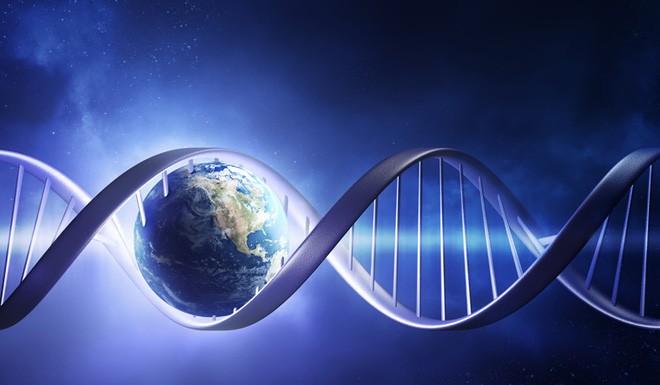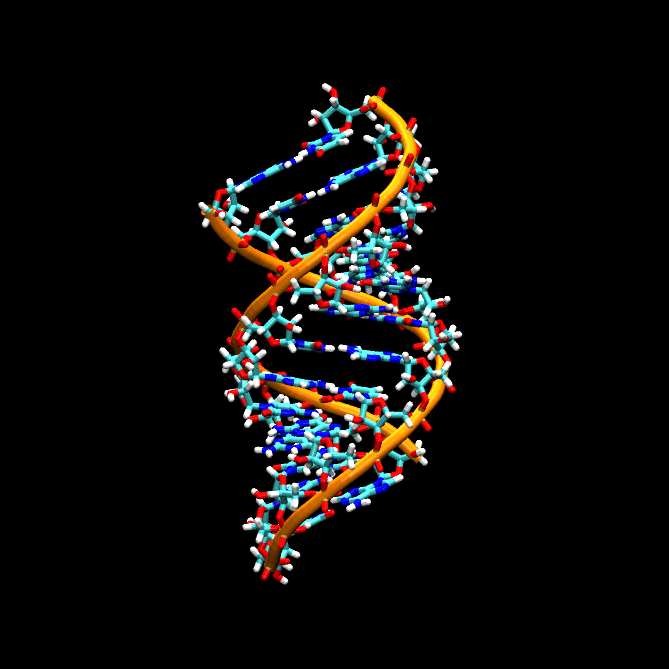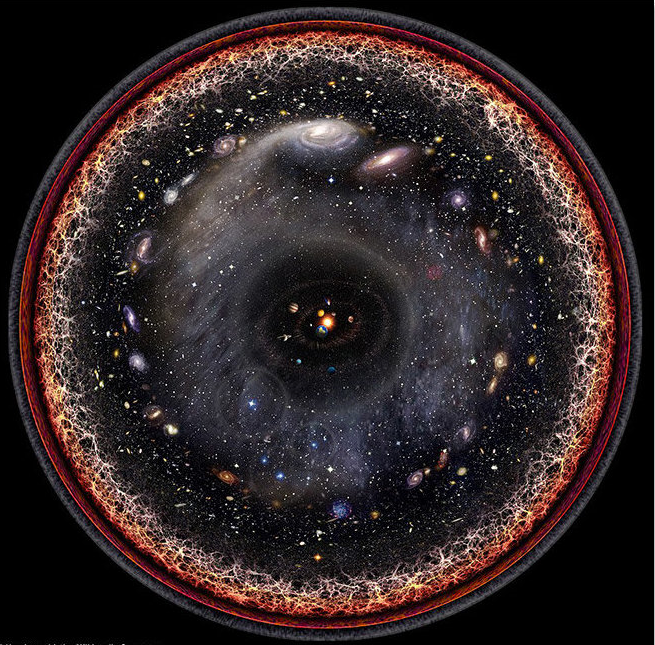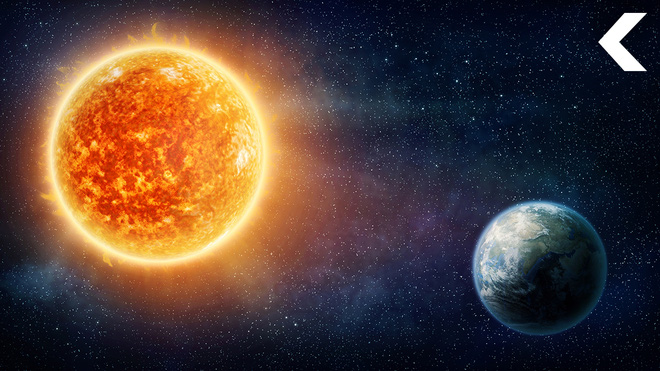Scientific research: Life can exist in many places in the Universe, it is not only in the region we can observe.

The origin of life is the process by which non-living (inorganic) matter, itself assembles under a number of natural conditions suitable to develop into simple organic compounds. Of course, details of this process remain a mystery and scientists still don't know how exactly they occur, or how often they occur in the universe.
The religions of the world also have many different ideas about how life appears, of course, they always believe that all the universe is created by the magic hand of supernatural powers.But those explanations, just colorful myths, make many of us not really satisfied.
"How did life appear?"is one of humanity's most intriguing questions and keeps scientists constantly looking for answers.
Tomonori Totani, a professor of astronomy at the University of Tokyo, was also drawn to these ideas.He wrote an article titled "The Occurrence of Life in an Expansion Universe" , published in the Natural Science Report.

Professor Totani's astronomy lab
Professor Totani's research is based on two factors that go hand in hand:
- The age and size of the Universe, the expansion of the Universe and the rate of events of any Universe.
- Research on RNA, to find out how long a sequence of nucleotides need to " expect a self-replicating activity to take place ".
Professor Totani's work, like almost all studies of the origin of life, considers the basic components of life on Earth: RNA, also known as ribonucleic acid.DNA is much more complex than RNA, and it carries information about how to form an individual's life.But RNA is still more complex than the chemical combination found on Earth, and because RNA is simpler than DNA, the rate of RNA's self-formation is higher.
There is also an evolutionary hypothesis that although DNA carries instructions to create an organism, RNA is the regulator of transcription of DNA sequences. The theory is called ' evolution based on RNA ' and confirms that RNA is the object of natural selection in Darwinism and can also be inherited.
So if we have to look between RNA and DNA, to find out which biological component was first created in the early universe, we should choose RNA.

Images simulating two strands of RNA.
RNA is a sequence of chemicals called nucleotides. Many studies show that a sequence of nucleotides requires at least 40 to 100 nucleotides before the replication behavior occurs in order for life to survive.
It takes quite a long time, when enough nucleotides are assembled, to form a chain to meet that minimum length requirement. And the question is, is there enough time for such life to form in the universe? The universe has existed for more than 13 billion years and we are sitting here, the answer must be yes?
However, according to the published press release of this new paper, "Current estimates suggest that the number of life-giving beings from 40 to 100 nucleotides is magical, unable to appear in space regions of the universe. we can see. "
The bottom line is, what about the space we can't observe?

The visible universe is 93 billion light-years in diameter.
"The universe is actually much larger than the part that can be observed by humans , " Professor Totani said. "In contemporary cosmology, the universe has undergone a period of rapid expansion creating an area that is so vast, so large that beyond the horizon of space we can observe it directly. This larger integration into life-starting models significantly increases the chance of generating life. "
Our Universe was born in a Big Bang and according to Professor Totani's research, the Universe "may consist of more than 10 ^ 100 stars like the Sun" , while the Universe observes are only containing about 10 ^ 22 stars.
We all know that life has happened at least once, so there is no problem that it happened again, even if the opportunity is extremely small.

Finding the Solar System like the Solar System is the key to discovering life.
According to statistics, the amount of matter in the observed universe can only produce RNA 20 nucleotides long, lower than the number 40 to 100. But because of rapid expansion, the majority of the universe is outside the observed area. of mankind. That means: the distance was so far that the light emitted from the Big Bag era did not reach the Earth. When cosmologists add the number of stars in the visible and unobserved universe together, the result is 10 ^ 100 stars like the Sun,
That means there is a lot of material in outer space that makes RNA sequences form not only feasible but already possible, or even certain, to happen.
In his research, the professor said he studied basic relationships. That: "Quantify the chemical interactions that originate from the minimum length of RNA needed to make the polymer - the first high-molecular polymer - and the size of the Universe needed to create an RNA sequence. long enough and capable of forming life, based on the addition of monomers - the units that make up the multi molecule ".
If you read the above lines but difficult to understand, this is the conclusion of Professor Tomonori Totani:
"If in the future we find out that alien life forms come from another origin than we do, it means that there is some unknown mechanism that has more nucleotide nucleotides faster than the random statistical process." .

It only takes more material than life can produce itself.
The universe is actually larger than the visible part and is capable of containing up to 10 ^ 100 stars just like the Sun. If the probability of making abiotic RNA on an Earth-like planet is 1, the minimum nucleotide length must be less than 20 nucleotides, much lower than the initial 40-nucleotide minimum.
But scientists do not think that RNA can replicate by itself when there are only 20 nucleotides, at least from our point of view when life forms on Earth. As Professor Totani said in his paper, there must be some unknown process appearing in an infinite Universe of possibilities.
What is the mysterious process?
Perhaps no one knows, but this will be a science gap that religions can shout "Of course, it is God."
Professor Totani's work does not really have to be the answer to the way in which life originates. But like so many other scientific studies, it helps create open problems for the next generation to solve as they gain more knowledge.
Like many of my peers, my motivation is curiosity and big questions, "Professor Totani said.
"Combining two recent investigations of RNA chemistry with the history of cosmology, made me realize that the universe must have many ways to transition from abiotic state to biological state. That's a thought." interesting and I hope this research can shed some light on that, helping to discover the origin of life. "
You should read it
- How long does it take to get up to 7 life-capable planets - has Trappist-1 been discovered?
- Build a space telescope complex to serve the mission of finding aliens
- NASA will reveal new discoveries about extraterrestrial ocean worlds tonight
- Maybe the Solar System 2.0 is not the 'cradle of nurturing life' as NASA hopes
- If people 'occupy' the Sun 2.0 system, how different is life there from Earth?
- The project to search for alien life stopped working after 20 years
- Top 5 planets may be our 'new houses' in the future
- PERMA rules and know-how to have a full life
May be interested
- Top 5 planets may be our 'new houses' in the future
 recently, scientists have discovered proxima b called the second earth may exist life. so, can people in the future settle in planets other than earth?
recently, scientists have discovered proxima b called the second earth may exist life. so, can people in the future settle in planets other than earth? - It turns out 15 'facts' about the Earth and the universe that we still believe is completely wrong
 the sun is yellow, nothing faster than light, the moon has a dark side ... are the 'facts' that many people still believe and share over the years. but they are all inaccurate scientific information that has been rejected by science.
the sun is yellow, nothing faster than light, the moon has a dark side ... are the 'facts' that many people still believe and share over the years. but they are all inaccurate scientific information that has been rejected by science. - NASA announces a place that can survive life right in our solar system
 1 hour this morning, nasa has officially announced the great discovery, enceladus - saturn's moon officially joins places that are likely to exist in the solar system.
1 hour this morning, nasa has officially announced the great discovery, enceladus - saturn's moon officially joins places that are likely to exist in the solar system. - New discoveries could make 2025 an unexpectedly happy year
 this article summarizes the good things that happened in science, which made this recent year more worthwhile, comfortable, and happier in countless ways.
this article summarizes the good things that happened in science, which made this recent year more worthwhile, comfortable, and happier in countless ways. - How to Take Unique Photos of Familiar Places with Your Smartphone
 being familiar with the places you live or visit regularly may make you less likely to spot unique photo opportunities, but this doesn't mean they don't exist.
being familiar with the places you live or visit regularly may make you less likely to spot unique photo opportunities, but this doesn't mean they don't exist. - New scientific discovery: Jogging may not be good for health
 recent research results show that people who run a lot and those who never run have a shorter lifespan than moderate exercise practitioners.
recent research results show that people who run a lot and those who never run have a shorter lifespan than moderate exercise practitioners. - Uranus's 4 icy moons can exist liquid water oceans
 water is considered one of the essential elements constituting life on earth, and is also the most studied chemical compound in the universe by humans.
water is considered one of the essential elements constituting life on earth, and is also the most studied chemical compound in the universe by humans. - 50 images of Saturn's Enceladus moon - where life can exist (Part 1)
 join tipsmake.com to admire 50 images of saturn's enceladus moon - where life can exist in the article below!
join tipsmake.com to admire 50 images of saturn's enceladus moon - where life can exist in the article below! - Determine the secret location of TR-3B UFO triangle on Google Earth?
 a mysterious 'ufo' spy device can exist and one of their secret hiding places can be discovered on google earth. invite you to find out!
a mysterious 'ufo' spy device can exist and one of their secret hiding places can be discovered on google earth. invite you to find out! - Scientists have found evidence to prove the existence of the parallel universe
 the first evidence of the viability of another universe has been gradually revealed.
the first evidence of the viability of another universe has been gradually revealed.










 How do paleontologists calculate the weight of a dinosaur?
How do paleontologists calculate the weight of a dinosaur? The largest mammoth structure ever found in Russia, shows that prehistoric humans are probably wiser than we thought.
The largest mammoth structure ever found in Russia, shows that prehistoric humans are probably wiser than we thought. Louis Vuitton purchased 40 million masks of COVID-19 for France
Louis Vuitton purchased 40 million masks of COVID-19 for France Scientists find the true cause of the giant animal extinction in Australia
Scientists find the true cause of the giant animal extinction in Australia Tools that turn plastic bottles into ropes
Tools that turn plastic bottles into ropes Wind and solar are becoming cheaper than traditional coal power plants
Wind and solar are becoming cheaper than traditional coal power plants